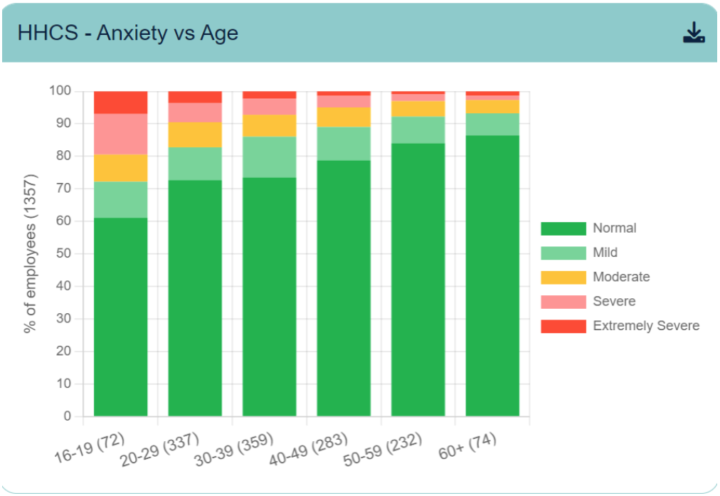
11 Aug Mental Health Priorities
During the pandemic there was an enthusiastic approach from most organisations to implement initiatives designed to assist employees. A great deal of that focus was on managing the variety of mental health matters that were ever present.
There is a view now that some of that enthusiasm may have waned as the word returns to post pandemic procedures and struggles to define the new work style.
Given the impact of the pandemic, particularly on mental health matters (depression, anxiety and stress) across all age groups, it is worth reconsidering what needs to be on the mental health priority list in ever workplace. Our data on Australian workers suggests one area of focus should be the management of anxiety, particularly in younger age groups.

The interventions we employed have had a profound impact on assisting individuals manage their head health. These interventions were data driven and could be delivered to individuals and groups. Other health related matters associated with mental health issues were attended to by our team. Such an integrated system works and can be rolled out easily to any workforce.
In WA, the new legislation compels organisations to demonstrate how they are going to manage the psychosocial risks in the workplace. The system described above will help fulfil this requirement.
McKinsey have suggested that 33% of employees experience negative impact on their mental health when certain return to work criteria is imposed by employers. So how can this matter be addressed to mitigate more mental health issues?
- Consider more flexibility with employees around work, family and locations of work.
- Help employees stay connected.
- Leaders and management overtly display that mental health is a priority for the organisation. Develop a framework to support individuals over the long term.
- Increase acceptance of being open about “all things” mental health in the workplace. The organisation must model and show empathy as well as compassion towards all those impacted.
- It could be time to support people who are having the difficult and uncomfortable conversations about their mental health issues. While business is trying to open up on such matters, it is still a risk factor that is not readily discussed. The stigma around mental health is slowly changing but it remains a day-to-day challenge for an increasing number in the workforce.
- As a CEO you need to consider what steps you can take to support employees’ mental health. We would be happy to work with you to implement what we have road tested over the last few years with some highly significant results.
Like a great number of human risk factors – if they can be mitigated than it is good for the individual and business.
Reading
Schwanter M, 3 steps CEO’s need to take to support Employee Mantal Health, Inc.Australia, April 28, 2023

